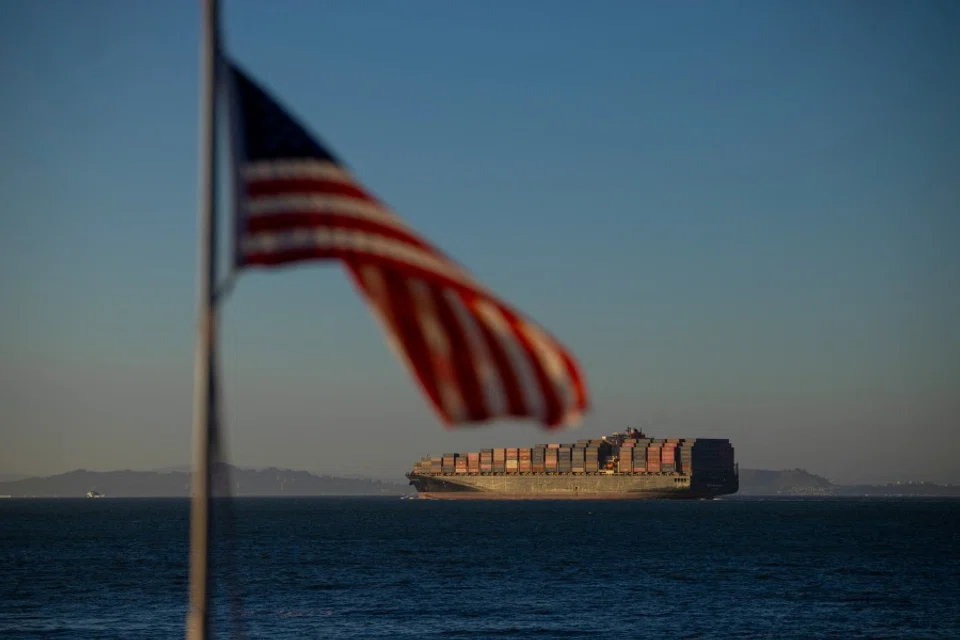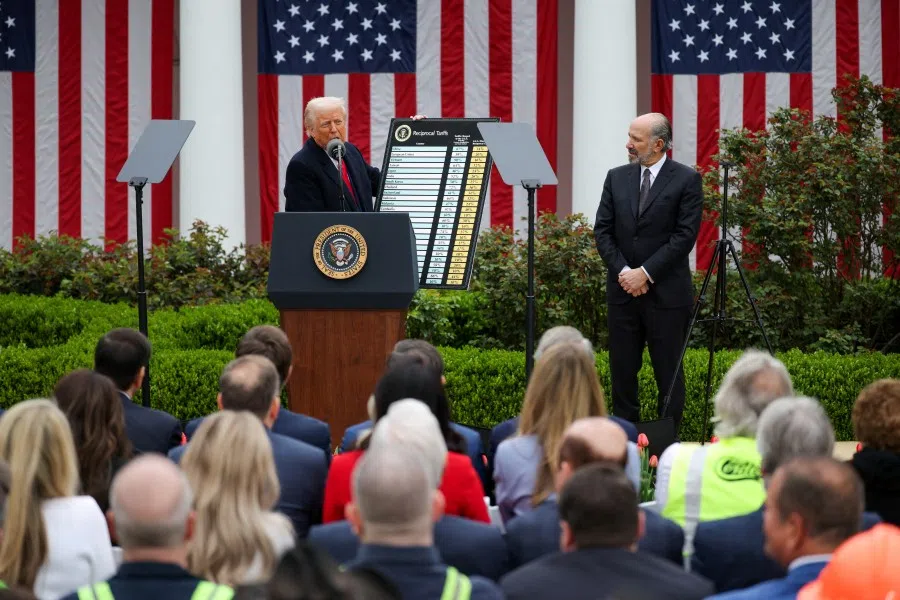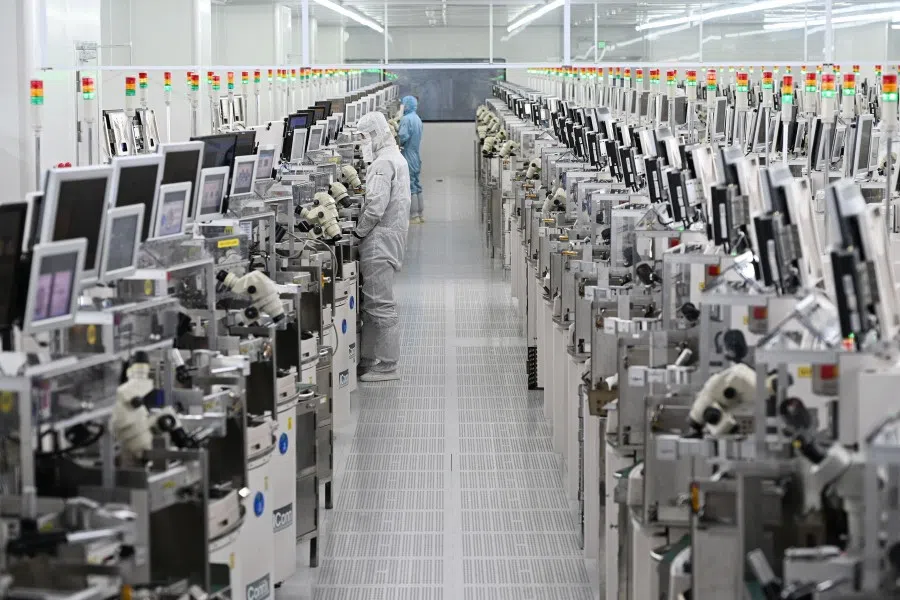The boomerang president: How Trump’s tariffs backfired
Trump’s ambitious tariffs have backfired, forcing abrupt reversals and showing that Americans — not foreign companies — ultimately pay the price. Former journalist Goh Choon Kang tells us more about growing domestic frustration in the US, and how the international trade order is gradually reducing their reliance on the US.

On 2 April this year, US President Donald Trump announced the imposition of “Liberation Day” tariffs on countries around the world. Now, more than six months later, the negative effects people had long predicted are finally emerging within the US. Inflation has become an undeniable fact, forcing Trump to scramble for remedial measures.
On 14 November, Trump signed an executive order immediately cancelling import tariffs on a series of agricultural products — including beef, tomatoes, coffee and bananas — in an effort to bring down grocery prices. Soaring prices and rising living costs have stirred anxiety among Americans. This move reverses Trump’s earlier insistence that tariffs would not lead to higher prices, and marks his capitulation to economic reality.
Why did the negative effects of the tariffs take about six months to appear? A common explanation is that US importers rushed to stock up before the tariffs took effect, building up inventories to meet short-term needs. But those inventories have finally dried up. Now, to replenish supplies, they must face higher costs imposed by the tariffs, and those increased costs can only be passed on to consumers.
But the facts are plain to see — he is reaping exactly what he sowed. Democrats mock him, saying that although it was Trump who set the fire, he now has the nerve to claim credit for putting it out.
A short-sighted strategy that has backfired
Trump’s usual tactic is to shift blame to the previous Democratic administration under Joe Biden. Every problem and fault, he claims, was caused or left behind by the Biden team. But the facts are plain to see — he is reaping exactly what he sowed. Democrats mock him, saying that although it was Trump who set the fire, he now has the nerve to claim credit for putting it out. It’s truly absurd.

Quibbling is entirely in line with Trump’s personality; for him, changing his course counts as flexibility, when it is really just opportunism. But looking strictly at the matter itself, his policy U-turn illustrates at least two points. Firstly, across-the-board tariff hikes inevitably lead to higher prices — the higher the tariff rate, the greater the pressure on ordinary people. This is basic Economics 101. Yet to fulfill his campaign promises of tax cuts for the wealthy and big corporations, Trump had no choice but to rely on tariff increases to make up for the lost tax revenue.
The agricultural products that received tariff exemptions this time are items that are not domestically produced in sufficient quantities to meet domestic demand, and therefore must rely heavily on imports. They include hundreds of products such as coconuts, nuts, avocados and pineapples. The tariff-cut measure is retroactively effective from 12:01 am on 13 November, a highly unusual move that signals the intensity of public backlash. The tariff darts seem to have turned into boomerangs; the White House has sensed the danger and has moved swiftly in an attempt to ease public anger.
Secondly, it is impossible for the US to “cancel” other countries or to decouple economically from China, Brazil, Mexico and so on. Take coffee and other agricultural products that Americans consume daily — can the US rely solely on its own production? Extreme weather and supply shortages have already caused global coffee bean prices to surge over the past two years, rising nearly 19% in the first nine months of this year. Trump slapped a 50% “reciprocal tariff” on Brazil, the world’s largest coffee exporter, inevitably worsening the burden on American consumers.
Capitalists moved labour-intensive factories overseas to maximise profits, but unemployed workers foolishly believe it was the Chinese who stole their jobs. What a tragedy.
The cost of outsourcing low-profit industries
Although the US is vast and resource-rich, it lacks the conditions needed to become the “world’s factory” the way China has. US capitalists pursue profit above all — only large profits, not small ones. This is why they championed globalisation early on, relocating production lines to places providing cheap labour, avoiding taxes while earning higher profits.
They also outsourced all industries that yield only meagre gains or generate heavy pollution to other countries, then imported what they needed — an intelligent way to cut costs. Many low-profit industries thus ended up in China’s hands. Unexpectedly, years later, this created a dependence on China’s supply chains. Not only is the US unable to decouple from China, even sanctions prove ineffective and instead backfire. Rare earths are a classic example.

Yet now, America’s vested-interest groups have reversed their stance and accuse China, Mexico, Canada and others of “taking advantage” of the US — a truly laughable claim. American citizens have long lived under the illusions spun by capitalists, elites, and the so-called “deep state”, and have repeatedly been fed empty promises. Capitalists moved labour-intensive factories overseas to maximise profits, but unemployed workers foolishly believe it was the Chinese who stole their jobs. What a tragedy.
When they first heard the term “reciprocal tariffs”, quite a number believed Trump’s claim that foreign companies would pay these tariffs. Only now do they realise that the cost ultimately falls on themselves...
Americans foot the tariff bill
In daily life, Americans have long grown accustomed to inexpensive, good-quality goods from China and elsewhere — household items, clothing, shoes, hats, toys and even Christmas trees. Imposing across-the-board tariffs only increases the cost of living and inevitably sparks backlash. For the sake of votes, how could Trump not make a drastic U-turn?
Still, after all this chaos, many American voters now finally understand what tariffs actually mean. When they first heard the term “reciprocal tariffs”, quite a number believed Trump’s claim that foreign companies would pay these tariffs. Only now do they realise that the cost ultimately falls on themselves — the real suckers footing the bill. This shows the unbelievable lack of economic literacy many Americans possess.
In Singapore, where the average education level is higher, people instantly know tariffs are bad news. They know tariffs will hurt our exports and even reshape global trade patterns. And indeed, that is exactly what is happening. Observers note that Trump’s tariffs have triggered a trend of “de-Americanisation”. Countries, including US allies, have suddenly been jolted awake. They now understand they cannot put all their eggs in the American basket. New multilateral trade arrangements are emerging. This is an even larger backlash — a global backlash — against Trump’s tariffs.

After all, most countries live by trade and believe free trade best serves their interests. The right approach is not protectionism or building tariff walls. Yet faced with the unilateralism of a superpower, many governments feel immense frustration. For a time, they seem helpless and can only begrudgingly enter bilateral negotiations. But once they regain composure, they naturally begin seeking alternative paths rather than waiting passively to be exploited.
WTO members could establish a new Global Trade Organisation, adopting the WTO’s agreements and dispute-settlement mechanisms. Any country willing to abide by these rules could join. — Anne Osborn Krueger, former World Bank chief economist
A new post-US trade order?
The larger international backlash may still be ahead. Some more concrete proposals for “reducing dependence on the US” have begun to appear. Beyond smaller regional initiatives, bolder concepts are gaining traction — for example, former Canadian central banker Mark Carney’s idea that major trading blocs such as the EU and the Comprehensive and Progressive Agreement for Trans-Pacific Partnership (CPTPP) could form a new multilateral alliance.
The World Trade Organisation (WTO) has limped along due to persistent US obstruction. Not long ago, former World Bank chief economist Anne Osborn Krueger wrote that WTO members could establish a new Global Trade Organisation, adopting the WTO’s agreements and dispute-settlement mechanisms. Any country willing to abide by these rules could join.
She argues that if the EU and CPTPP members are willing to participate, other countries — including South Korea — would likely join as well. Crucially, the accession process should remain simple to ensure continuity with existing WTO rules. With most of the world’s major trading nations united, much of the WTO’s practical value could be preserved until the US decides to change course.
Of course, implementing such proposals would not be easy. Many leaders — especially in the EU, Japan, Australia and South Korea — dare not provoke the most powerful president in the world. For now, they stay compliant. But for Trump, public goodwill seems increasingly irretrievable. Facing boomerangs both at home and abroad, his aggressive dominance may already be sliding toward decline. And if the US Supreme Court rules that the Trump administration lacks the authority to levy tariffs under the International Emergency Economic Powers Act (IEEPA), the consequences would be even more unimaginable.
This article was first published in Lianhe Zaobao as “特朗普关税的回旋镖”.





